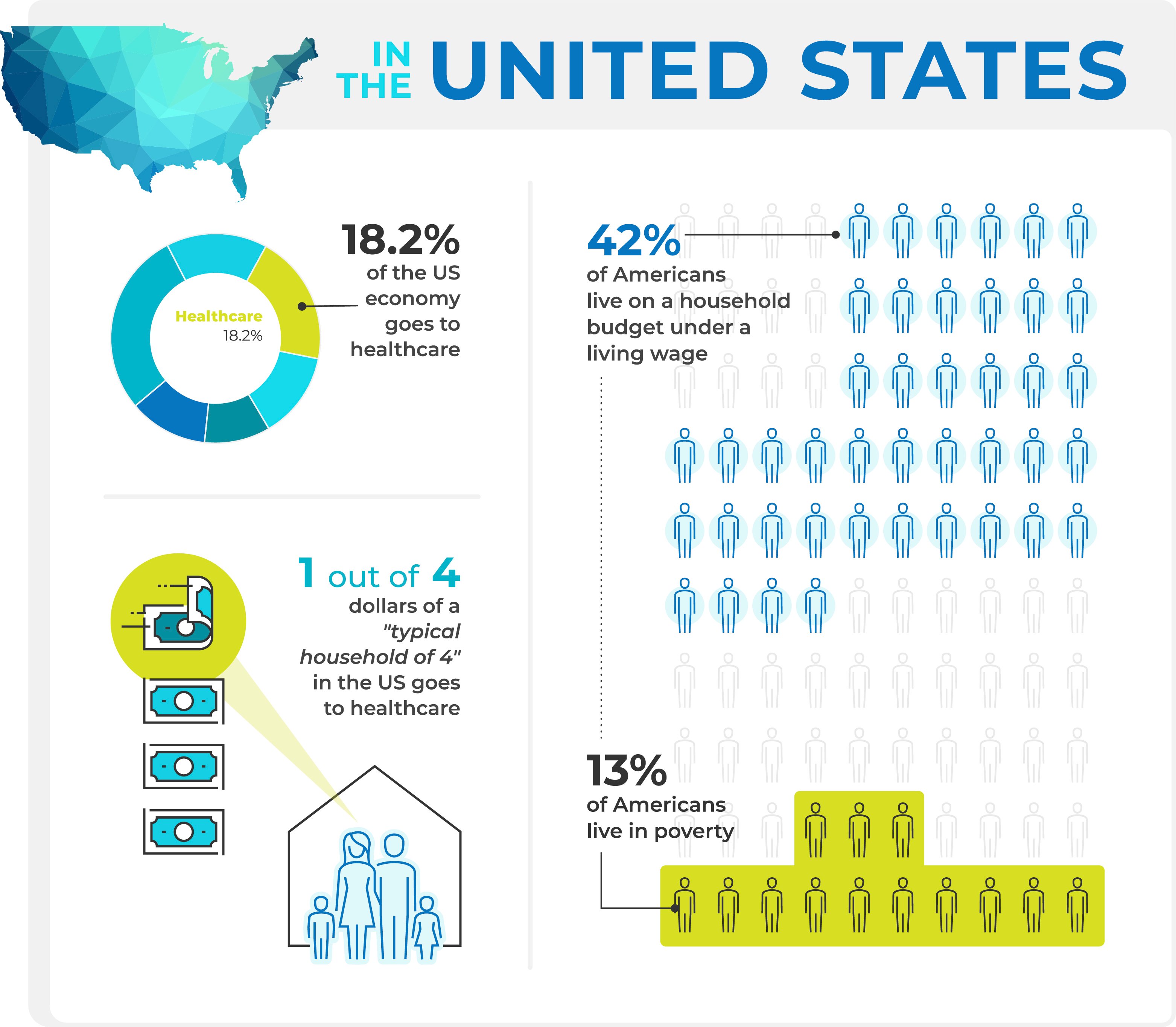Why is the Total Cost of Care a Big Deal?
Healthcare in the United States produces a variety of less than desirable outcomes, including unclear buzzwords. On this list is “Total Cost of Care.”
While many definitions and arguments for these definitions exist, we can define them in plain language as all revenues + all expenses = total cost of care.

Economic principles and gross domestic product (GDP) calculations make this slightly more complicated, but simplistically we have a very objective total cost measure: Healthcare GDP. In plain language this is the annual money exchanged in the US focused on healthcare on unused goods and services.
Since the prominence of the publication “To Err is Human: Building a Safer Health System” was released in 1999 and often cited as the sparking of healthcare reform, JAMA, McKinsey & Company, CMS, Advisory Board, and many others have generally agreed that one-quarter of US healthcare spending is waste. [i] [ii] [iii]
While the non-universal healthcare element of the US is often used as a scapegoat for this waste, it's important to note the country with the highest government healthcare spend per person is Norway at $6.9K per person. For a nearly fully universal healthcare country, this is 85% of the total healthcare spend in the country. Second is the US at $5.5K per person (WHO), accounting for half of the country's healthcare spending. Back to plain language: lacking universal healthcare is not the root issue in the United States.
Why is the United States' rising, wasteful, and ineffective spending on healthcare - all in the total cost of care - a big deal? A few alarming statistics:

- 42% of Americans live on a household budget under a living wage and 13% live in poverty.[iv] Every American should find their state's United Way research and examine these livable wage budgets.
- 2% of the US economy (GDP) goes to healthcare[v]
- One out of every four dollars of a "typical household of 4" in the US goes to healthcare, and this is trending upwards closer to 33%[vi]
The healthcare ecosystem and exchanges between insurance companies, healthcare delivery, government, and many other players often confuse who pays for healthcare. When one traces back to who funds taxes, premiums, and out-of-pocket expenses, it comes down to the individuals and businesses that pay for healthcare in the US. When one hears "insurance paid for that," it is important to remember who paid for the insurance that covered the service.
Pause for a plain language summary: the US spends too much on healthcare, negatively impacting consumerism and overall economic health, thus creating a further gap in economic equality.
What is the solution? Genuine efforts to reduce the slice of the healthcare pie (healthcare % of GDP). While generalizing, the emergence of venture capital in healthcare is caused by healthcare being one of the economy's fastest-growing sectors. These venture capitalists are going for a piece of the growing slice. Healthcare investments have to focus on prevention, efficiency, and effective utilization. These investments should result in less money needed in the future because patients are healthier and happier, and the underlying delivery structure requires less maintenance.
Want to learn more? Contact Amitech Solutions to see how they are helping healthcare payors and providers to use data analytics and intelligent automation to reduce the cost of care.
_________________
[i] Shrank, W. (2019, October 15). Waste in the US Health Care System. JAMA. Retrieved December 3, 2021, from https://jamanetwork.com/journals/jama/fullarticle/2752664.
[ii] Sahni, N. R., Carrus, B., & Cutler, D. M. (2021). Administrative simplification and the potential for saving a quarter-trillion dollars in health care. JAMA, 326(17), 1677. https://doi.org/10.1001/jama.2021.17315. https://www.mckinsey.com/industries/healthcare-systems-and-services/our-insights/administrative-simplification-how-to-save-a-quarter-trillion-dollars-in-us-healthcare
[iii] The Healthcare Value Hub. (2021). Cost & Quality Problems Too Much Waste in Our Healthcare System. The Healthcare Value Hub. Retrieved December 15, 2021, from https://www.healthcarevaluehub.org/cost-and-quality-problems/browse-cost-driverquality-issue/waste
[iv] United Way. (2020, December). ON UNEVEN GROUND ALICE and Financial Hardship in the U.S, 2020 National Report. RESEARCH CENTER NATIONAL OVERVIEW. Retrieved December 15, 2021, from https://www.unitedforalice.org/national-overview
[v] U.S. Centers for Medicare and Medicaid Services. (2020). National Health Expenditure Data: Historical. U.S. Centers for Medicare and Medicaid Services. Retrieved December 13, 2021, from https://www.cms.gov/Research-Statistics-Data-and-Systems/Statistics-Trends-and-Reports/NationalHealthExpendData/NationalHealthAccountsHistorical. Table 2 National Health Expenditure Amounts and Annual Percent Change by Type of Expenditure: Calendar Years 2012-2028
[vi] Published by Jenny Yang, & 8, S. (2021, September 8). Annual medical cost for a family of four U.S. 2013-2021. Statista. Retrieved December 3, 2021, from https://www.statista.com/statistics/827399/annual-medical-cost-for-a-family-of-four/.





